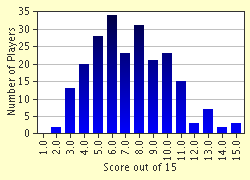Quiz Answer Key and Fun Facts
1. The London Underground is the oldest underground railway in the world.
2. The first trains were powered by direct current electricity because of the potential health and vision problems of smoke and steam.
3. The red, white and blue logo of the London Underground is familiar to most visitors and residents of London. When was this logo introduced?
4. Which London Underground network has the shortest overall track length?
5. How many London Underground lines make use of driverless trains?
6. How many individual London Underground line networks are there?
7. Although the system is called London Underground, less than half the rail network is actually underground or in tunnels.
8. Which London Underground line serves the most stations?
9. During World War II, many London Underground stations were used as air raid shelters, and some had even more specialised use. What was Goodge Street station used for?
10. Which of these is not a London Underground station?
11. In July 2002 Britain's longest advertising sign was unveiled at Bank Underground Station. Which company or organisation is featured in this advertisement?
12. In common with underground rail maps and station signs throughout the world, London Underground lines are depicted in a variety of colours. Which of the following colours is not used to depict a London Underground line?
13. In 2004 it was found that rubber mountings on carriages were collapsing on Piccadilly Line carriages. What was the suspected cause of this problem?
14. The walls of London Underground station platforms are normally covered in advertising posters, but those of the Northern Line platform at Charing Cross depict artistic murals. What is the subject of these murals?
15. In 2003 Ken Livingstone, Mayor of London, offered a prize of £100,000 for designing a new feature for the London Underground system. What was this feature?
Source: Author
picqero
This quiz was reviewed by FunTrivia editor
minch before going online.
Any errors found in FunTrivia content are routinely corrected through our feedback system.

